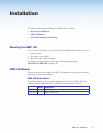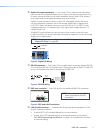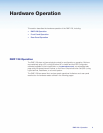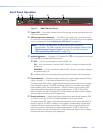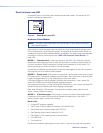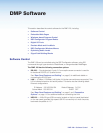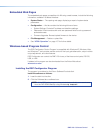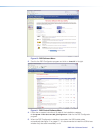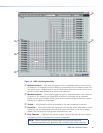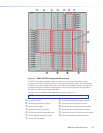
MODE 5 — Factory default reset: With power on, press and hold the reset button
until the reset LED blinks 3 times (~9 seconds). Release then momentarily (<1 second)
press the reset button to return the DMP128 to factory default conditions. If the second
momentary press does not occur within 1 second, the reset is exited.
The default (reset) state of the device is:
• All mix-points are set to 0dB gain and muted
• Input 1 is routed to Output 1
• Input 2 is routed to Output 2
• Input 3 is routed to Output 3
• Input 4 is routed to Output 4
• Input 5 is routed to Output 5
• Input 6 is routed to Output 6
• Input 7 is routed to Output 7
• Input 8 is routed to Output 8
• All outputs active (unmuted, 100% volume)
• No inserted or active DSP processing
• All audio inputs are set to 0dB gain and muted
• All preset and group master memory is clear (empty)
Digital I/O Ports
The four 6-pole 3.5 mm captive screw connector Digital I/O ports provide twenty
configurable digital input or output ports designed to connect to various devices such
as motion detectors, alarms, lights, LEDs, buttons, photo (light) sensors, temperature
sensors, relays (requiring ≥30 mA), and others.
All digital I/O ports are tied to a common ground (one common ground for each 6-pole
connector), but can be individually configured to operate in one of two modes: digital
input or digital output. Digital I/O port triggers are not limited to a specific unit and can
trigger events across a DMP128 system.
The ports are configured via DSPConfigurator. Each port can be configured to monitor
or drive TTL level digital signals. The ports consist of five I/Os with the sixth pin used as a
ground providing five ports total. The DSP Configurator software provides selection of a
script from a list, to be loaded to the DMP128. The scripts provide pre-configured sets of
functions.
From the main structure menu, select Tools > Configure Digital IO to access the
scripts (see “DigitalI/OPorts” on page88).
DMP128 • Operation 13



